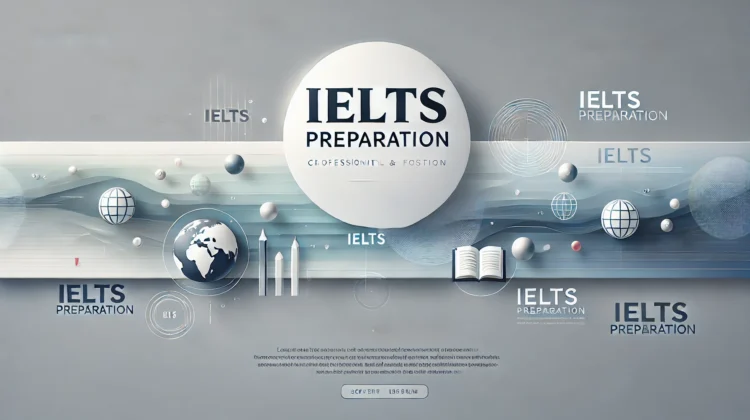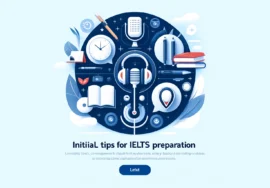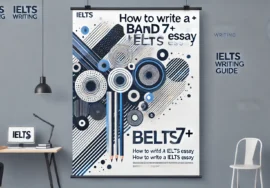
Getting to Know the IELTS Exam: Structure and Scoring
Discover everything you need to know about the IELTS exam, including its structure, scoring system, and tips for preparation. Learn how each section (Listening, Reading, Writing, Speaking) is scored and how to achieve your best score for academic or professional goals.
Getting to Know the IELTS Exam: Structure and Scoring
The International English Language Testing System (IELTS) is one of the most trusted and widely recognized English proficiency tests worldwide. Whether you’re aiming to study abroad, apply for immigration, or improve your career prospects, understanding the structure and scoring system of IELTS is the first step toward effective preparation. In this article, we will dive deep into the components of the IELTS exam, how it’s scored, and how you can prepare for each section to achieve your best score.
Structure of the IELTS Exam
The IELTS exam is divided into four sections: Listening, Reading, Writing, and Speaking. Each section evaluates a different skill, and understanding the structure of these components will help you to focus on the right areas during your preparation.
1. Listening (30 minutes)

Overview:
The Listening section tests your ability to understand spoken English in various contexts. You will be required to listen to four recordings of native English speakers, ranging from conversations to monologues. These recordings become progressively more challenging.
Format:
- Section 1: A conversation between two people set in an everyday social context (e.g., booking a hotel room, making travel arrangements).
- Section 2: A monologue set in an everyday social context (e.g., a speech about community services, announcements at a public event).
- Section 3: A conversation among up to four people in an academic or training context (e.g., a discussion between students and a tutor).
- Section 4: A monologue on an academic subject, often a lecture or presentation.
Types of Questions:
The Listening test includes a range of question types, such as:
- Multiple Choice: Choosing the correct answer from a set of options.
- Short Answer: Answering questions with a specific word or number.
- Matching: Matching information (e.g., matching names to descriptions).
- Sentence Completion: Completing sentences using information from the recording.
- Map/Diagram Labelling: Labeling parts of a map or diagram based on what you hear.
Scoring:
The Listening section is scored out of 40 points. Each correct answer earns one mark, and your total score is converted into a band score on a scale of 0 to 9. Your final Listening band score is the average of your marks.
Tips for Preparation:
- Practice listening to different accents (e.g., British, Australian, American) as IELTS includes a variety of global accents.
- Familiarize yourself with the question types and practice taking notes while listening.
2. Reading (60 minutes)

Overview:
The Reading section evaluates your ability to read and understand written English, testing both your ability to grasp the main idea and identify detailed information. The texts vary in difficulty, and there are different versions depending on whether you’re taking the Academic or General Training IELTS.
Academic IELTS:
The reading texts are more complex and related to academic topics. You might encounter:
- Articles from books, journals, and newspapers.
- Scientific reports or discussions of social issues.
General Training IELTS:
The reading texts are more practical, focusing on everyday materials. You might encounter:
- Advertisements, notices, and instructions.
- Extracts from books or magazines.
Format:
- Section 1: Two or three short factual texts.
- Section 2: One or two longer texts related to work-related issues.
- Section 3: A longer, more complex text, often related to academic topics.
Types of Questions:
- True/False/Not Given: Identifying whether statements are true, false, or not mentioned in the text.
- Multiple Choice: Choosing the correct answer from several options.
- Matching Headings: Matching headings to the appropriate sections of a passage.
- Short Answer Questions: Answering questions using words from the text.
- Summary Completion: Filling in the blanks in a summary of the passage.
Scoring:
The Reading section is scored out of 40 points. Your score is converted into a band score (0-9), with each correct answer earning one mark.
Tips for Preparation:
- Practice skimming and scanning techniques to quickly identify key information in the text.
- Focus on reading a variety of texts, such as academic articles and newspapers, to build your reading stamina.
3. Writing (60 minutes)

Overview:
The Writing section assesses your ability to write clear, coherent responses in English. There are two tasks: Task 1 and Task 2.
Academic IELTS:
- Task 1: You’ll be given a graph, table, chart, or diagram and asked to describe the information in your own words.
- Task 2: You’ll write an essay in response to a question, presenting and justifying your viewpoint on an issue.
General Training IELTS:
- Task 1: You’ll write a letter (formal, semi-formal, or informal) in response to a given situation.
- Task 2: Similar to the Academic IELTS, you will write an essay in response to a problem or question.
Scoring:
The Writing section is scored based on:
- Task Achievement: Whether the response fully addresses all parts of the task.
- Coherence and Cohesion: How well ideas are organized and linked together.
- Lexical Resource: Range and accuracy of vocabulary.
- Grammatical Range and Accuracy: Variety and correctness of grammatical structures.
Each task is scored separately, and your overall Writing score is the average of these scores.
Tips for Preparation:
- Practice writing essays under time constraints.
- Focus on developing a clear structure for your writing (introduction, body, conclusion).
- Use a range of vocabulary and grammar structures to avoid repetition.
4. Speaking (11-14 minutes)

Overview:
The Speaking section evaluates your ability to communicate effectively in spoken English. It is a face-to-face interview with an IELTS examiner and is divided into three parts.
Format:
- Part 1: Introduction and general questions (e.g., about your hometown, hobbies, studies).
- Part 2: You’ll be given a topic card and asked to talk about a topic for 1-2 minutes. You’ll have one minute to prepare notes.
- Part 3: A deeper discussion of the topic from Part 2, focusing on more abstract ideas and issues.
Scoring:
The Speaking section is scored based on:
- Fluency and Coherence: The ability to speak smoothly and logically.
- Lexical Resource: Vocabulary used appropriately for the topic.
- Grammatical Range and Accuracy: Range and accuracy of grammar.
- Pronunciation: The clarity and accuracy of pronunciation.
Your score is based on your performance throughout the three parts of the Speaking test.
Tips for Preparation:
- Practice speaking English regularly with a tutor or language exchange partner.
- Focus on fluency rather than perfection; don’t be afraid to make mistakes.
- Prepare for common IELTS Speaking topics, such as education, travel, and technology.
Scoring the IELTS Exam:
Band Scores:
The IELTS exam uses a 9-band scale to assess your proficiency. The scale ranges from Band 0 (no attempt) to Band 9 (expert user).
- Band 9: Expert user
- Band 8: Very good user
- Band 7: Good user
- Band 6: Competent user
- Band 5: Modest user
- Band 4: Limited user
- Band 3: Extremely limited user
- Band 2: Intermittent user
- Band 1: Non-user
- Band 0: Did not attempt the test
Your final score is the average of the four sections (Listening, Reading, Writing, and Speaking), rounded to the nearest half band.
Why is IELTS Scoring Important?
- Universities: Most universities require a specific IELTS score for admission, especially for programs taught in English.
- Immigration: Many countries use IELTS scores for immigration purposes. For example, Canada, Australia, and the UK have specific score requirements for visa applications.
- Employers: Some employers may use IELTS scores to assess your ability to communicate in English in the workplace.
Conclusion:
Understanding the structure and scoring system of the IELTS exam is the first essential step toward achieving success. With its comprehensive evaluation of Listening, Reading, Writing, and Speaking skills, IELTS assesses your ability to use English in real-world academic and professional contexts. By familiarizing yourself with the details of each section and its specific requirements, you can tailor your study plan to focus on the areas that need the most attention, allowing you to perform at your best on test day.
The band score system provides clear and measurable feedback on your level of proficiency, and achieving a higher score will open doors to various opportunities, whether it’s for university admission, immigration, or career advancement. By practicing regularly, improving your weak areas, and familiarizing yourself with the question formats and types, you can approach the exam with confidence.
Ultimately, consistent preparation combined with a strategic approach to each section will maximize your chances of achieving the IELTS score you desire.








